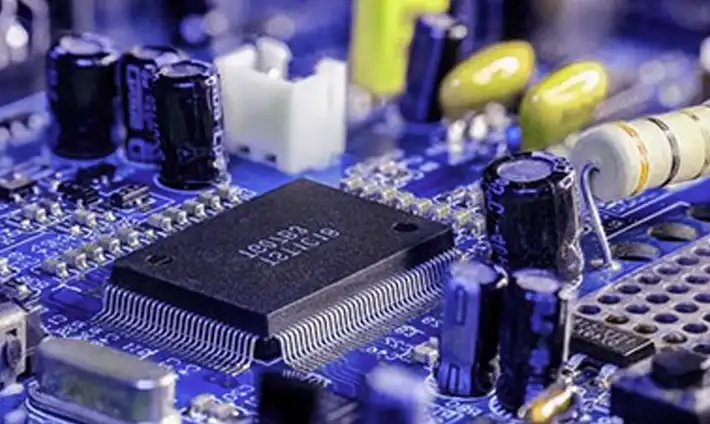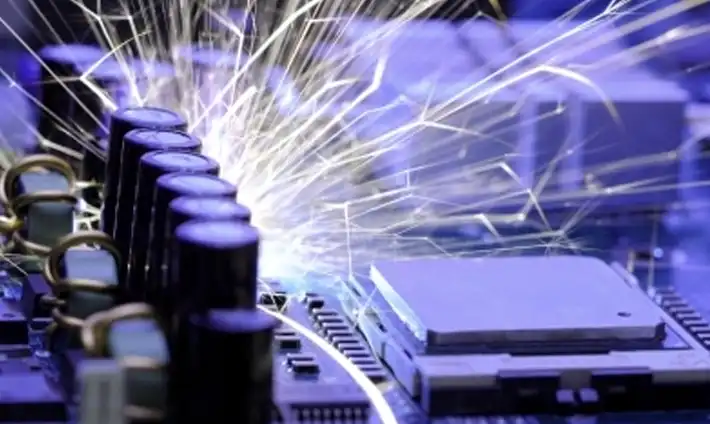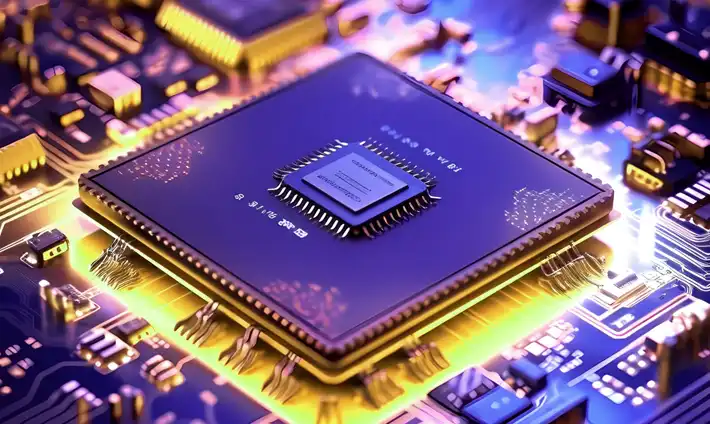Electronic components are the backbone of modern technology, powering our devices and gadgets. However, these components are susceptible to damage from excessive voltage.
This article addresses the crucial question: how many volts can damage an electronic component? Understanding this threshold is essential for protecting your devices and ensuring their longevity.
How Many Volts Can Damage an Electronic Component?

Voltage plays a fundamental role in the operation of electronic components. In simple terms, voltage refers to the electrical potential difference between two points in a circuit. It’s measured in volts (V) and indicates the force or pressure pushing electrical current through a circuit.
Electronic components, ranging from resistors and capacitors to transistors and integrated circuits (ICs), rely on specific voltage levels to function correctly. Each component has a defined voltage tolerance, indicating the range of voltages it can safely handle without sustaining damage.
Voltage Tolerance Levels:
Different electronic components have varying voltage tolerance levels. For instance, passive components like resistors and capacitors typically have higher voltage tolerance, often ranging from a few volts to several hundred volts. In contrast, active components such as transistors and ICs, which actively control or amplify electrical signals, tend to be more sensitive and have lower voltage tolerance.
Impact of Voltage Spikes:
While electronic components are designed to operate within certain voltage ranges, they can be susceptible to voltage spikes—sudden, brief increases in voltage beyond the normal operating range. These spikes can occur due to various factors, including power surges, lightning strikes, or switching transients in electrical circuits.
Voltage spikes pose a significant risk to electronic components, as they can exceed the components’ voltage tolerance and cause irreversible damage. Even a single spike, if sufficiently high, can lead to component failure or degradation, impacting the overall performance and reliability of electronic devices.
Mitigating Voltage Risks:
To protect electronic components from voltage-related damage, several strategies can be employed:
- Voltage Regulation: Using voltage regulators or stabilizers helps maintain a consistent voltage supply, ensuring that components receive the required voltage within safe limits.
- Surge Protection Devices: Installing surge protectors, transient voltage suppressors (TVS diodes), or voltage clamping devices provides additional defense against voltage spikes, diverting excess energy away from sensitive components.
- Grounding Practices: Proper grounding of electronic devices and circuits is crucial for dissipating excess voltage and preventing the accumulation of static electricity, which can pose a risk to components.
By understanding the relationship between voltage and electronic components and implementing appropriate protective measures, it’s possible to minimize the risk of voltage-related damage and ensure the reliable operation of electronic devices.
High Voltage Electronic Components
High voltage electronic components play a vital role in various applications, from power distribution and transmission to specialized equipment used in scientific research and industrial settings. These components are designed to handle voltages significantly higher than those encountered in typical electronic devices.
Let’s explore some common high voltage electronic components and their applications:
High Voltage Capacitors:
High voltage capacitors are designed to store and discharge electrical energy in high voltage circuits. They are commonly used in power supplies, pulse generators, and energy storage systems. High voltage capacitors feature robust construction and insulation materials capable of withstanding voltages ranging from hundreds to thousands of volts.
High Voltage Diodes:
High voltage diodes are semiconductor devices that allow current to flow in one direction while blocking it in the opposite direction. They are used in rectifier circuits, high voltage power supplies, and voltage multiplier circuits. High voltage diodes are capable of handling voltages ranging from several hundred to thousands of volts.
High Voltage Transformers:
High voltage transformers are essential components in power distribution systems, electric vehicles, and industrial equipment. They are used to step up or step down voltages in AC power systems and convert electrical energy from one voltage level to another. High voltage transformers are designed to withstand high voltages and currents while maintaining efficient energy transfer.
High Voltage Resistors:
High voltage resistors are used to limit or control the flow of electrical current in high voltage circuits. They are commonly employed in voltage dividers, voltage measurement circuits, and high voltage power supplies. High voltage resistors are constructed using materials with high insulation properties to prevent arcing and breakdown at elevated voltages.
High Voltage Switches:
High voltage switches are used to control the flow of electrical current in high voltage circuits. They are commonly used in power distribution systems, circuit breakers, and high voltage testing equipment. High voltage switches are designed to safely handle large currents and voltages, with arc suppression and insulation features to prevent electrical breakdown.
High voltage electronic components are critical for various electronic component applications where voltage levels exceed those found in standard electronic devices. These components are designed and manufactured with robust materials and insulation techniques to ensure reliable operation at elevated voltages. Whether in power distribution systems, industrial equipment, or scientific instruments, high voltage electronic components play a crucial role in enabling advanced technologies and applications.
Factors Affecting Voltage Damage

Several factors influence the susceptibility of electronic components to voltage damage. Understanding these factors is crucial for effectively protecting electronic devices and ensuring their longevity.
Component Sensitivity:
The sensitivity of electronic components to voltage fluctuations varies significantly. Some components, such as microprocessors, transistors, and integrated circuits (ICs), are highly sensitive and can be easily damaged by voltage spikes or surges. It’s essential to select components that match the intended voltage range and provide adequate protection against sudden voltage changes.
Environmental Conditions:
Environmental factors, including temperature and humidity, can impact the voltage tolerance of electronic components. Extreme temperatures or humidity levels can exacerbate the effects of voltage fluctuations, leading to accelerated degradation or failure of components. Proper environmental control and monitoring are essential for maintaining the reliability of electronic devices in challenging conditions.
Circuit Design:
The design of the circuit board and layout play a crucial role in mitigating voltage-related issues. Poorly designed circuits can exacerbate voltage spikes and increase the risk of damage to sensitive components. Proper grounding techniques, signal isolation, and the use of voltage regulation devices are essential aspects of circuit design that can help minimize the impact of voltage fluctuations.
Power Supply Quality:
The quality and stability of the power supply are critical factors in preventing voltage damage to electronic components. Unstable or poorly regulated power sources can introduce voltage fluctuations and spikes into the system, posing a risk to sensitive components. Using high-quality power supplies with built-in voltage regulation and surge protection features can help ensure a stable and reliable power supply for electronic devices.
Operating Conditions:
The operating conditions under which electronic devices are used can also affect their susceptibility to voltage damage. Devices operating in harsh environments or subjected to heavy loads may experience greater stress on electronic components, increasing the likelihood of voltage-related issues. Regular maintenance, monitoring, and adherence to operating guidelines can help mitigate these risks and prolong the lifespan of electronic devices.
By considering these factors and implementing appropriate protective measures, such as voltage regulation, surge protection, and proper circuit design, it’s possible to minimize the risk of voltage damage to electronic components and ensure the reliable operation of electronic devices.
Protecting Electronic Components

Safeguarding electronic components from voltage damage is essential for ensuring the reliability and longevity of electronic devices. Implementing proactive measures and protective strategies can help mitigate the risks associated with voltage fluctuations and spikes.
Voltage Regulation:
Utilizing voltage regulation devices, such as voltage regulators and stabilizers, is a fundamental aspect of protecting electronic components. These devices maintain a consistent voltage supply to the components, ensuring that they operate within their specified voltage range. By stabilizing the voltage, voltage regulation devices help prevent voltage spikes and fluctuations that could potentially damage sensitive components.
Surge Protection Devices:
Installing surge protectors and transient voltage suppressors (TVS diodes) provides an additional layer of defense against voltage spikes and surges. Surge protectors divert excess energy away from electronic components, preventing voltage spikes from reaching sensitive circuitry. TVS diodes act as fast-acting voltage clamps, limiting the voltage across components during transient events. Together, these devices help safeguard electronic components from damage caused by sudden voltage changes.
Grounding Practices:
Proper grounding of electronic devices and circuits is essential for dissipating excess voltage and preventing the buildup of static electricity. Grounding provides a path for excess electrical energy to safely discharge into the ground, reducing the risk of voltage-related damage. By ensuring that electronic devices are properly grounded and that grounding connections are secure, the likelihood of voltage damage can be significantly reduced.
Environmental Considerations:
Environmental factors, such as temperature and humidity, can impact the performance and longevity of electronic components. Extreme temperatures or humidity levels can exacerbate the effects of voltage fluctuations and increase the risk of damage to electronic devices. It’s essential to maintain suitable environmental conditions for electronic equipment and to implement measures, such as temperature and humidity control, to minimize the impact of environmental factors on component reliability.
Regular Maintenance:
Regular maintenance and inspection of electronic devices are essential for identifying and addressing potential issues before they escalate into significant problems. Periodic checks of voltage regulation devices, surge protectors, and grounding connections can help ensure that protective measures are functioning correctly. Additionally, monitoring operating conditions and addressing any abnormalities promptly can help prevent voltage-related damage and prolong the lifespan of electronic components.
By incorporating these protective measures into electronic device design and maintenance practices, it’s possible to effectively safeguard electronic components from voltage damage and ensure the reliable operation of electronic devices.
FAQs
What is the maximum voltage tolerance for most electronic components?
Most electronic components can tolerate voltages within the range of 3.3 to 5 volts. However, it’s essential to refer to the component datasheets for precise specifications.
Which electronic component below has a dual voltage selector switch?
Some power supplies, particularly those used in electronic devices like computers or appliances, may feature a dual voltage selector switch. This switch allows users to adjust the input voltage to match the specific power requirements of different regions or countries. It’s essential to consult the device’s user manual or specifications to locate and properly configure the voltage selector switch to prevent damage to the device.
Can a single voltage spike permanently damage an electronic component?
Yes, even a brief voltage spike can cause irreversible damage to sensitive electronic components, especially integrated circuits and microprocessors.
How can I test the voltage tolerance of electronic components?
You can use a multimeter or oscilloscope to measure the voltage across the component terminals and compare it to the specified tolerance levels.
Are there any warning signs of voltage damage in electronic components?
Symptoms of voltage damage may include erratic behavior, overheating, or complete failure of the device. Promptly addressing these issues can prevent further damage.
What precautions should I take when handling electronic components?
Always observe proper ESD (electrostatic discharge) precautions, such as using antistatic wrist straps and mats, to prevent damage from static electricity.
Can voltage damage be repaired, or is replacement necessary?
In most cases, voltage damage is irreversible, necessitating the replacement of the damaged components. Attempting repairs without proper expertise can further damage the device.
Conclusion
Understanding the voltage thresholds that can damage electronic components is essential for maintaining the reliability and longevity of your devices. By implementing appropriate protective measures and adhering to best practices, you can mitigate the risk of voltage-related damage and ensure optimal performance. Remember to consult component datasheets and seek professional assistance when necessary to safeguard your valuable electronic equipment.